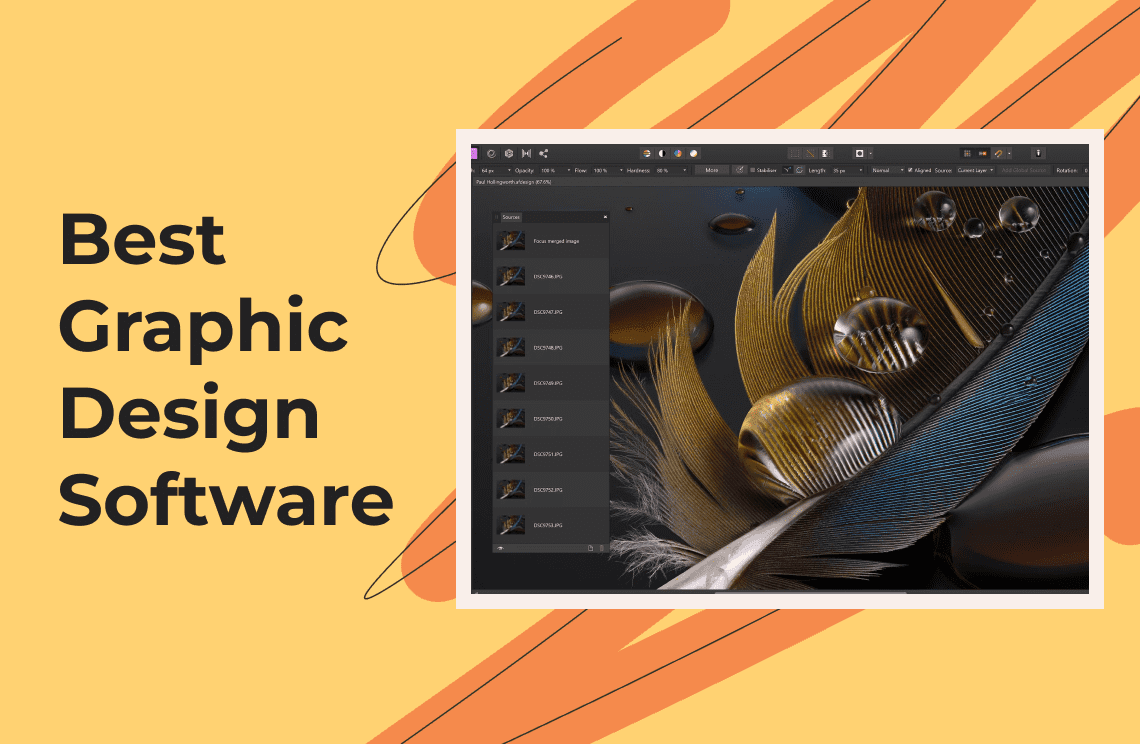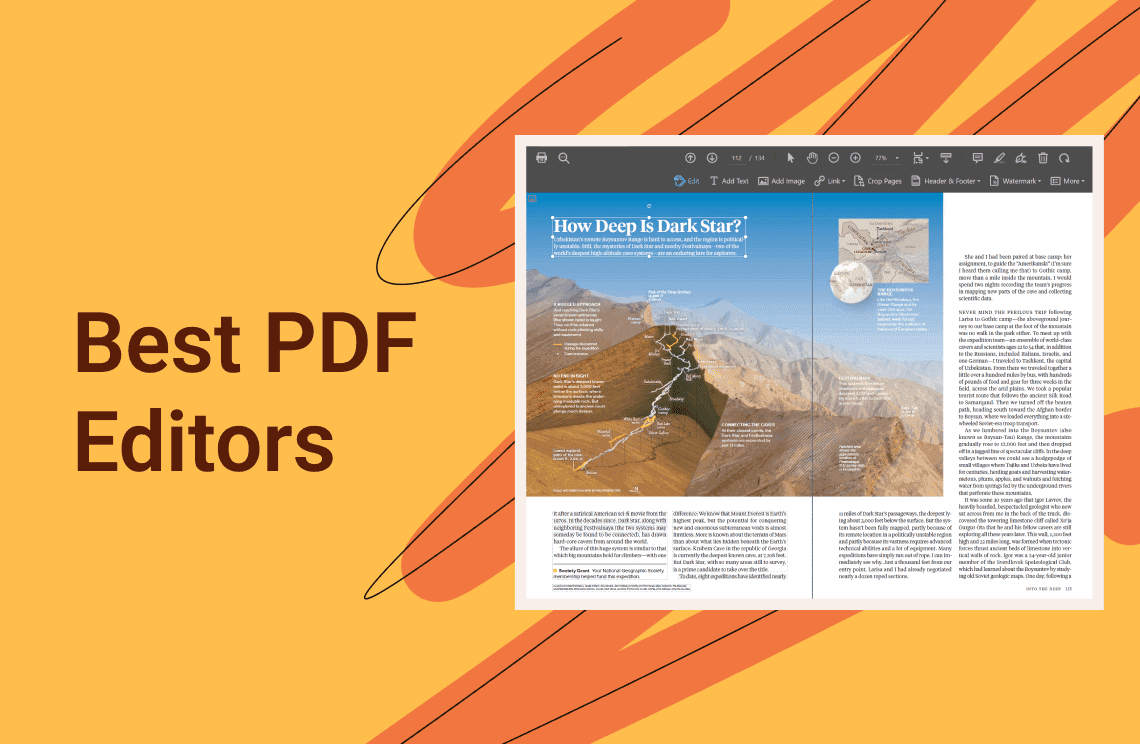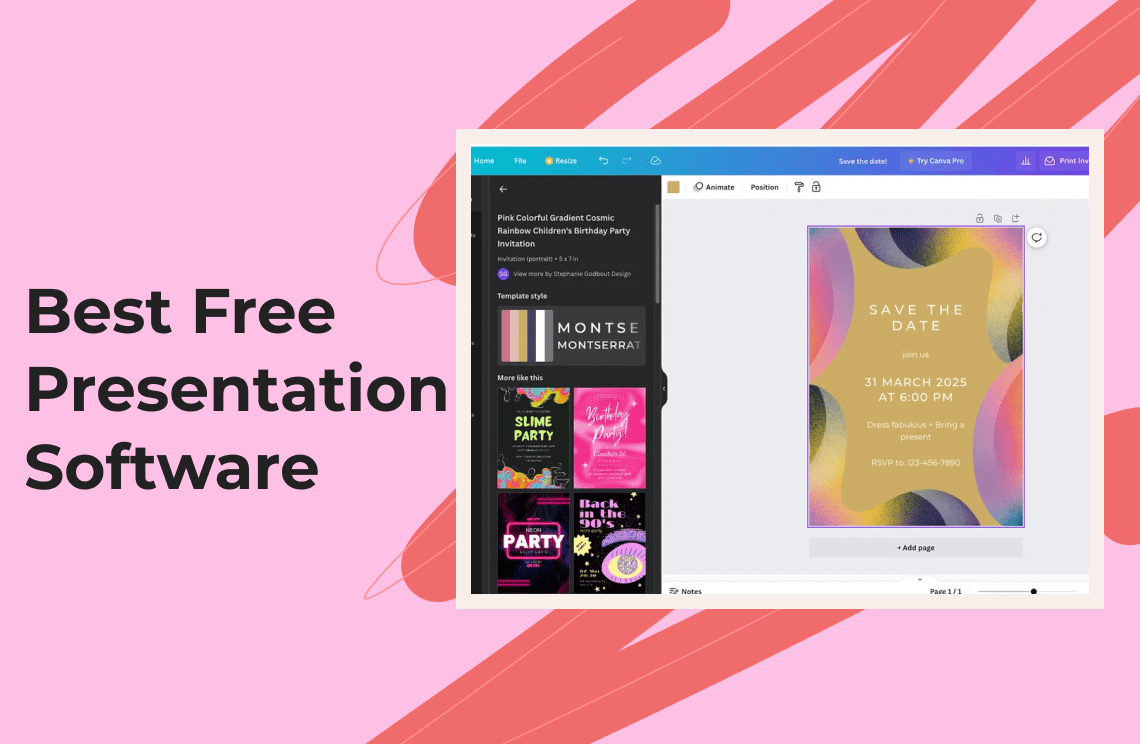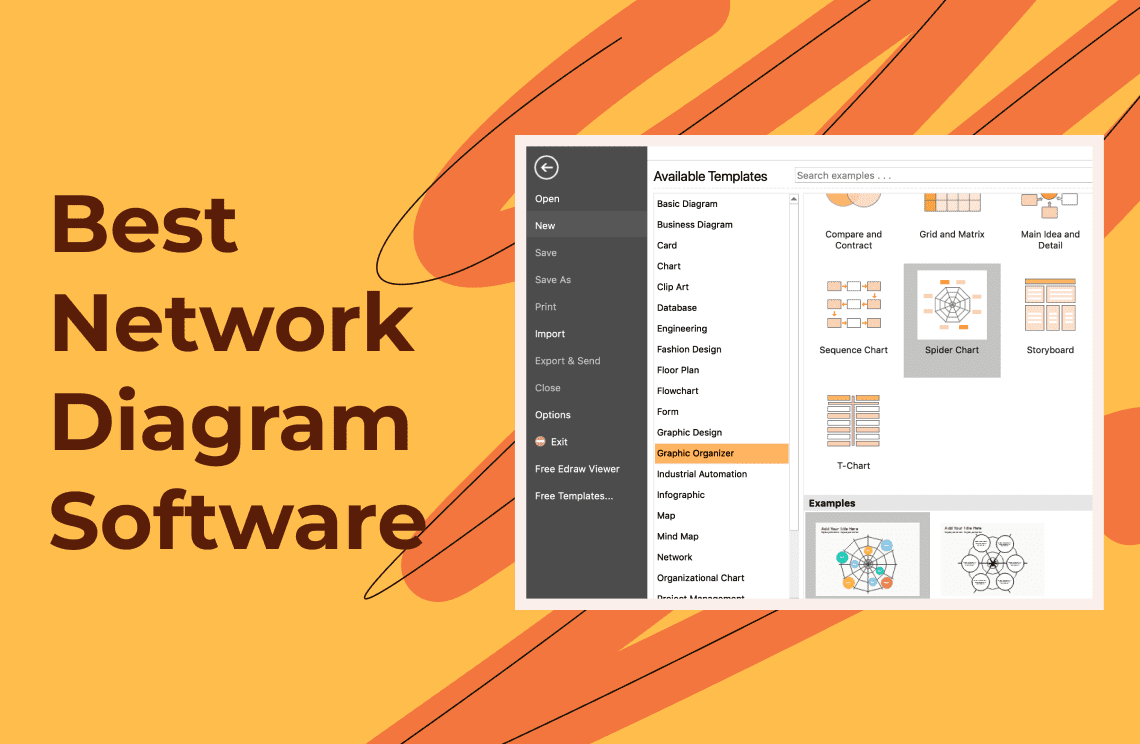Well-versed professionals, new creators, and non-designers looking to develop simple graphics generally need trusted graphic design software. However, choosing the best software may be easier said than done because of the countless providers today. This is why this list will give graphic designers ideas on which software today offers the best services to meet their design needs.
Free graphic design software for basic designing tools is free, while paid subscriptions provide premium features. Most graphic design programs come with tools like drag-and-drop functionality, font customizations, free stock templates, and the power of AI.
Best Free Graphic Design Software
Creators used to have fewer choices for graphic design tools. However, they can now enjoy many software options and tools regardless of their graphic design needs.
1. Adobe Illustrator

This graphic design software sets the standard for professionally made artwork, logos, icons, and infographics. Adobe Illustrator also continues to develop more features and tools for its users. This includes the Generative recolor functionality, where designers can use AI to explore themes, palettes, and colors. Furthermore, the interface allows toolbar customization. Meanwhile, the Width Tool and the added Rotate View make it easier to include variations in vector lines.
Key features
- Retype. You can quickly identify the unknown fonts from an artwork and use them in your designs.
- Image trace. This auto-detects types of art, remove image coloring, and reduces anchor points for hassle-free tracing.
- Hand lettering. Allows freehand fonts and digitizes them.
- Artwork export. You can export your designs as WebP images for app usage and websites.
- Retain PDF hyperlinks. Export graphic designs as a PDF file without removing the links.
Strengths
- It lets you start from a blank sketch or choose a template
- Vast selection of vector design tools
- Versatile graphic design creations
- Support several file formats
- You can integrate editing tools from other Adobe programs
Weaknesses
- Costly subscription plans
- Complex file management system
- Steeper learning curve
- Resource-heavy
2. Canva

While Canva is useful for all your graphic design needs, it's beneficial in routine content creation for marketing and social media campaigns. There are over a hundred free templates and various font sets and color combinations designers can choose from. Furthermore, you can add stickers and shapes and draw and edit text to bring your ideas to life.
Key features
- Collaboration tools. These tools make it easier to share projects with other team members with real-time collaboration and team folders.
- Integration with social media platforms. You can make graphic designs and upload them directly to various online platforms.
- Drag-and-drop functionality. The software provides a user-friendly interface, allowing beginners to start creating immediately.
Strengths
- Provides an easy navigation from one section to another
- Offers free version
- Excellent collection of tutorials and other learning resource materials.
Weaknesses
- The free trial has limited features
- Downloads are uneditable
3. Pixlr
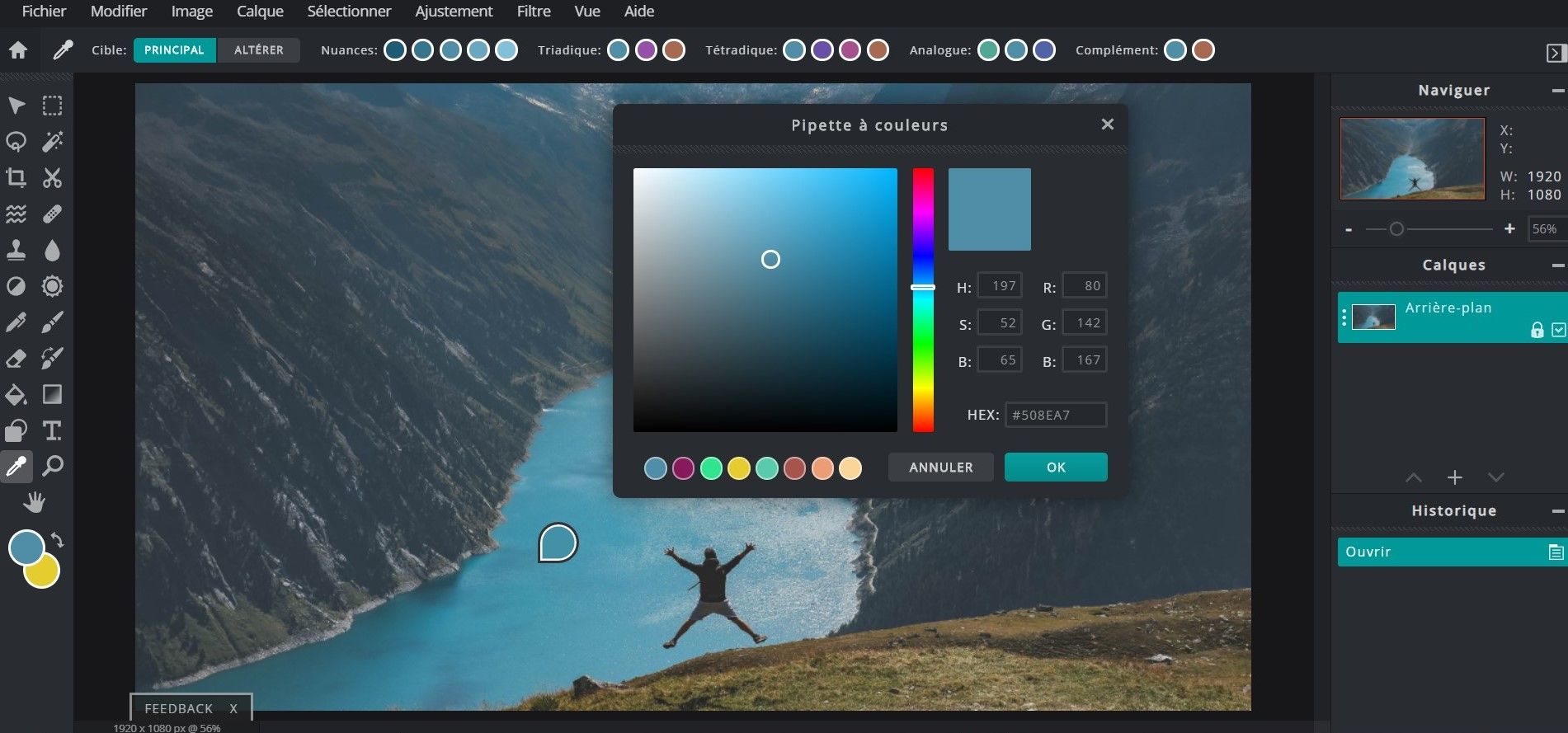
This software can be used on desktop browsers or mobile phones. This tool emphasizes AI designs. Creators can maximize several features including object or background removal, text-to-image, and generative expansion and fill. These specific functionalities let you develop unique concepts and illustrations. Also, Pixlr Designer provides access to an extensive library of templates, from flyers to social media posts, gift vouchers, and postcards.
Key features
- Template library. This includes various professional-looking templates, collage options, and market-driven templates like ads in different sizes, business cards, and flyers.
- Drag-and-drop functionality. The software is easy to use, especially for people without much experience in editing and graphic design.
- AI-powered graphic design tools. Maximize different functions like image generator, background remover, and more.
- Animations. There are presets that let you animate any designs.
Strengths
- Allows batch editing
- Affordable subscription plans
- Excellent font selection
- Supports various file formats when exporting images
Weaknesses
- The free version comes with different ads, which can distract the workflow
- A limited number of templates are offered
- Some filters might be outdated
4. Vectr
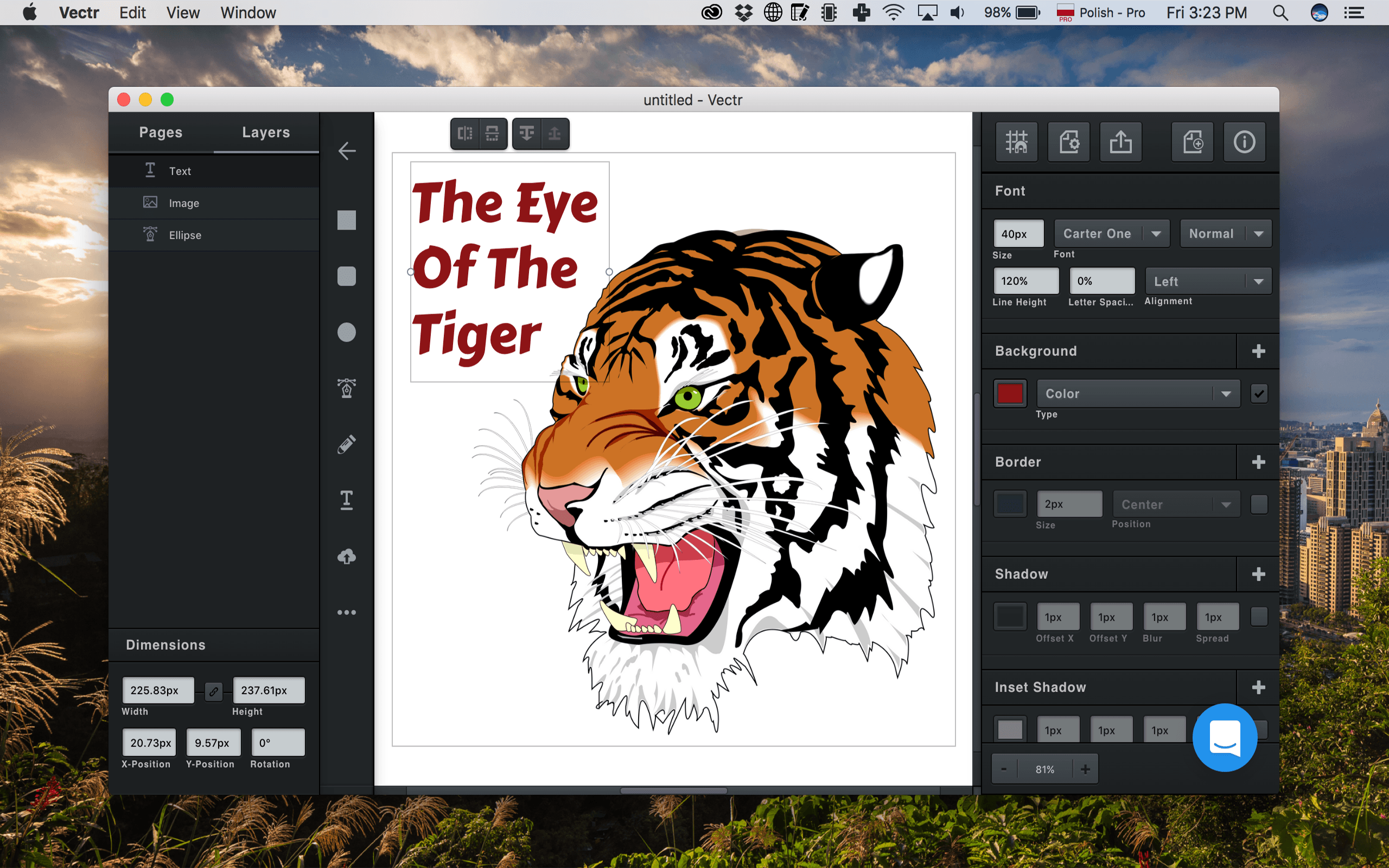
As the name suggests, Vectr is one of those graphic design tools which utilizes typography and vector graphics. It relies on mathematical equations rather than pixels. With this, designers can expect the images to scale and keep higher quality. Furthermore, you can design logos, posters, icons, and other creatives using different features like layers, shapes, and drawing tools.
Key features
- Real-time editing. There's a shared URL available for team members to use for seamless collaboration.
- AI-powered. Creators can automate their workflows using state-of-the-art features and tools.
- Auto-sync. You can save your work across all platforms.
Strengths
- Provides a rich collection of tutorials and other learning resource materials
- It's free graphic design software
- Offers blur-free graphics without any pixels
Weaknesses
- Customization options are limited
- There's no media library
5. Adobe Photoshop
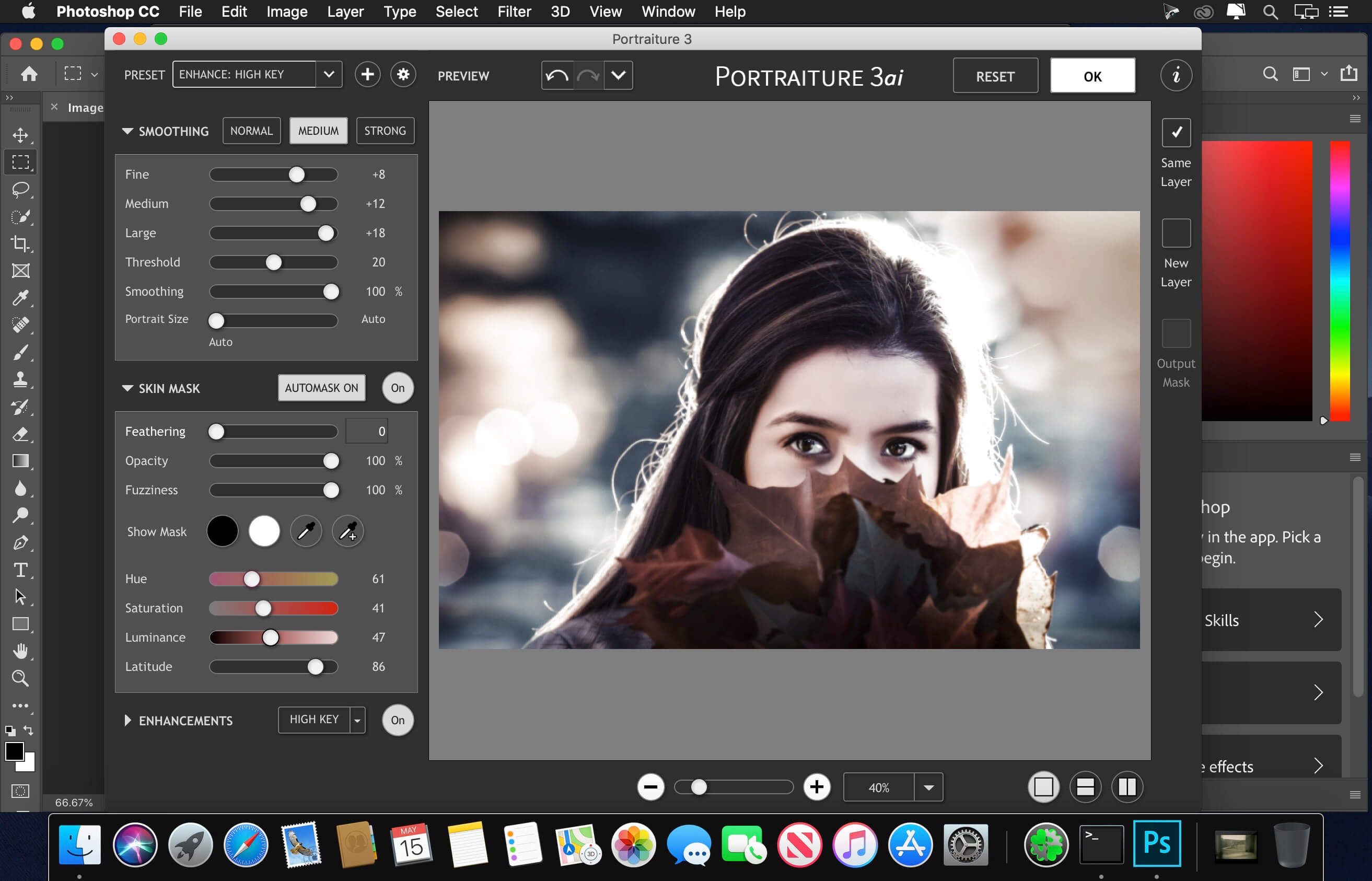
It's no secret that Adobe's design and photo software dominates the graphic design industry. Adobe Photoshop sets the standard for photo editing and design work with a toolkit that bursts with several features. One of the software's excellent tools includes the impressive layer handling, color management, and selection tools. Furthermore, this graphic design software controls designers, from their artistic filters to canvas sizes.
Key features
- Generative fill. Creators can use text prompts to generate ideas and designs
- Collaboration features. Account owners can edit permissions and manage feedback for a more organized collaboration.
- Time-saving features. Automation scripts and batch operations streamline and expedite workflows.
- Intuitive graphic design tools. Maximize several editing tools like masking, selection tools, and simple layers.
Strengths
- Comprehensive library of templates, stock images, videos, fonts, and icons
- Offers easy integration with other Adobe software
- Supports various file formats like JPG and PNG
Weaknesses
- Costly subscription plans
- The interface can be glitchy at times, especially for devices with low-powered processors
6. Affinity Photo

If you're not into paying regular subscriptions, try Affinity Photo's services. This software is available for a reasonable one-type payment for its desktop app and another separate payment if you wish to use the software on other devices. It works with filters and layers to make stunning effects with raster images and vectors. Designers can create 360-degree photo editing, HDR merge, and panoramic stitching.
Key features
- One-time purchase. There are no in-app purchases and monthly or yearly subscription plans.
- Asset library. Creators can store everything they need for a quick and flawless graphic design.
- Premium quality digital editing tools. This includes HDR merge and layer and raw editing.
- Offers overlay packs. You can enjoy additional editing tools for free with registration.
Strengths
- The software offers a 30-day free trial period
- Provides customizable brushes
- It's lightweight
- User-friendly interface
Weaknesses
- Keyword tagging feature is unavailable
- Some designers might experience software bugs and crashes
7. Adobe InDesign
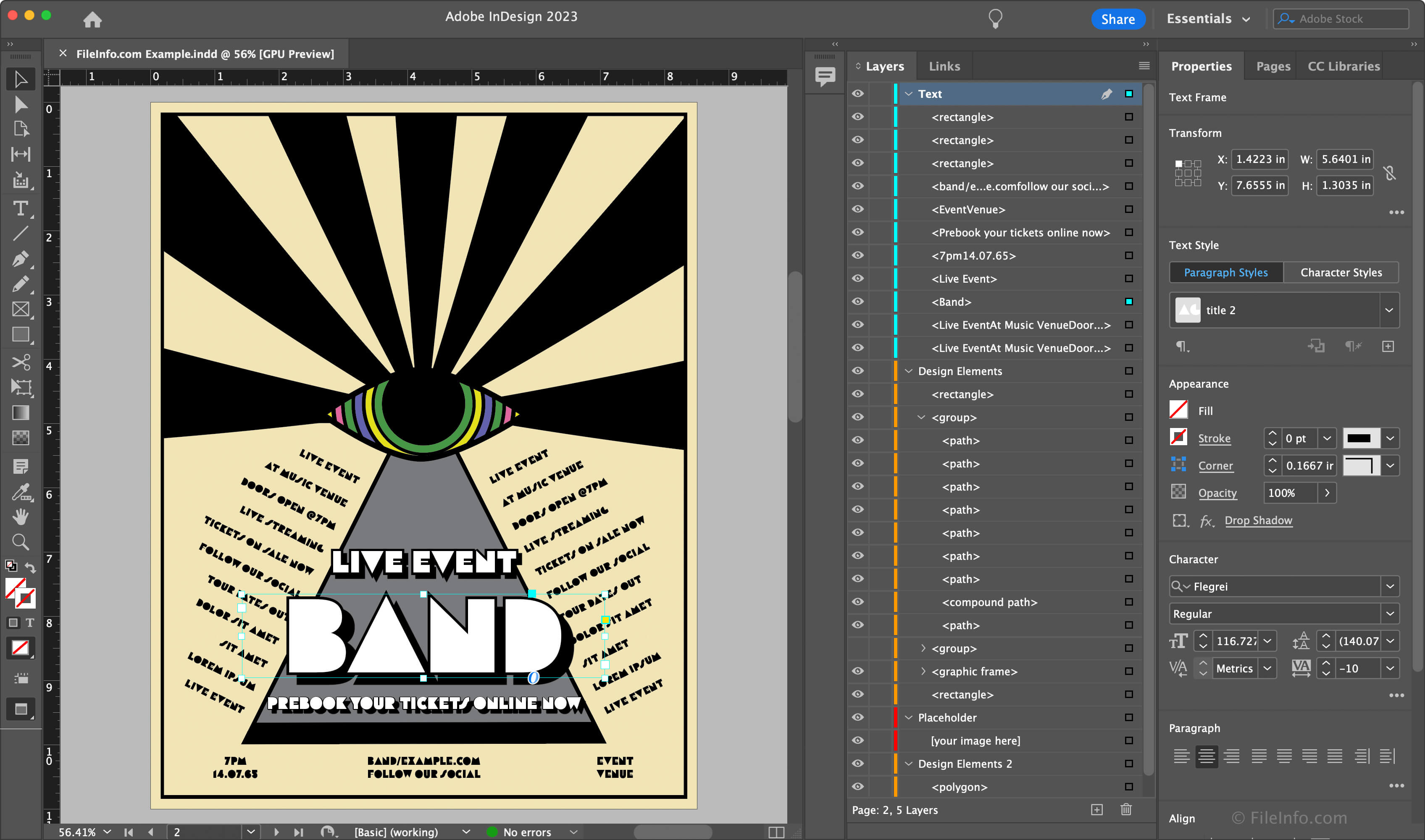
This is another excellent graphic design software from the Adobe family. While Adobe InDesign might be part of an extensive design software group, it speaks a relatively different language, which some designers may find challenging. It's ideal for image-heavy presentations, posters, and other documents. Furthermore, Adobe InDesign has many tools, including resizing, color location, and subject-aware text wrapping.
Key features
- Cloud Storage. Adobe InDesign automatically backs up all of your designs and projects.
- Ebook creation. Provides an effective setup guide and templates to create a professional-looking ebook.
- Adobe Creative Cloud integration. Look into the extensive library of images, fonts, and templates.
- Auto style. The software copies unformatted texts straight into the platform, and it will detect headings.
Strengths
- Best fits projects that require image-heavy illustrations
- Promotes a seamless collaboration
- Offer layering functionality
Weaknesses
- Subscriptions can be costly
- Steeper learning curve
8. CorelDraw
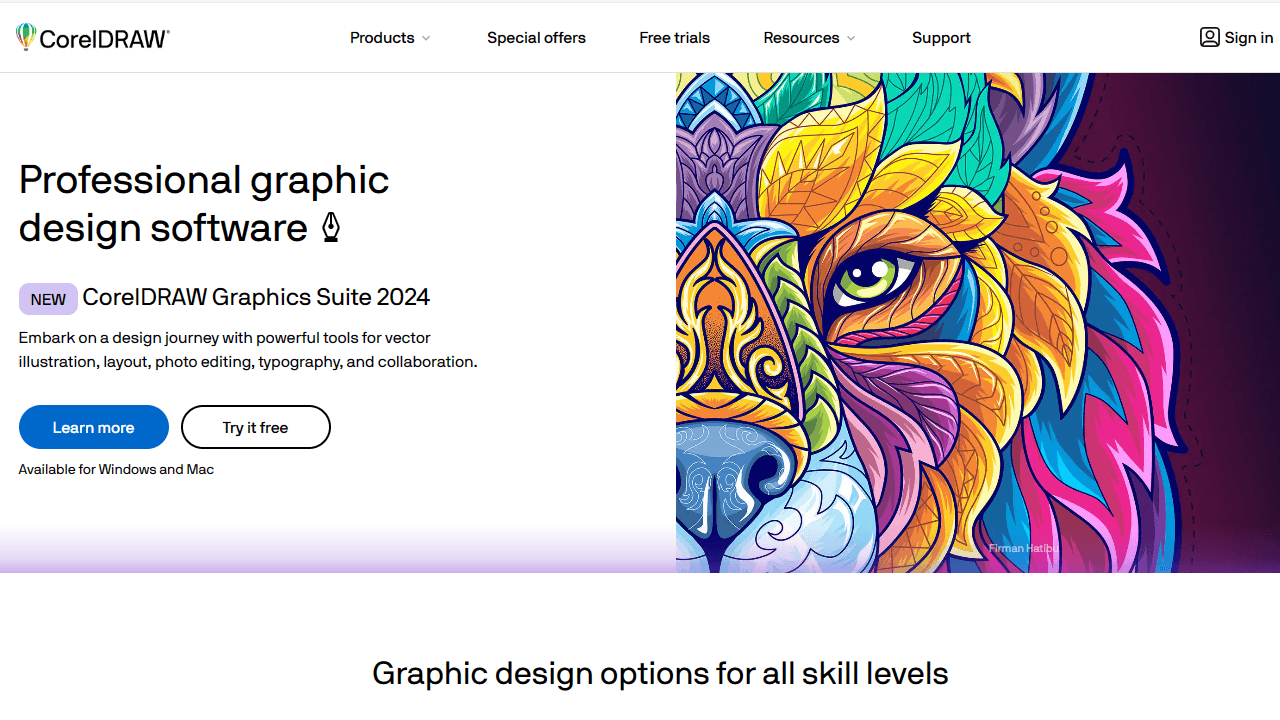
CorelDraw is available in two variants. The CorelDraw Standard is ideal for hobbyists and amateurs, while the CorelDraw Graphics Suite targets professional creators and designers. Users can opt for subscription-based or upfront pricing for the software. The more advanced version of the software supports 100 file formats and provides an in-depth tutorial and learning materials.
Key features
- Compatible with almost all file formats. This includes PDF, SVGZ, SVG, EPS, PNG, JPEG, and GIF
- Outstanding touch functionality. You can use your Android, iOS, PCs, and Chromebooks with touchscreen capabilities.
- Offers 3D modeling and visualization.
- Unlimited storage. Its Corel's Vector cloud provides unlimited space.
Strengths
- A vast range of features and functionalities for all types of designers
- Multi-language support
- Offers collaboration tools
- Template library
Weaknesses
- Steeper learning curve
- High hardware system requirements
- Expensive plans
Points to Consider for Choosing the Best Free Graphic Design Software
Software | Features | Strengths | Weaknesses |
Retype, image trace, hand lettering, artwork export, retains PDF hyperlinks | A vast collection of vector design tools, supports various file formats, integration with other Adobe programs, versatile graphic design creation | Expensive plans, steeper learning curve, complex file management system | |
Integration with social media platforms, drag-and-drop functionality, collaboration tools | Easy navigation within its interface, offers a free version, provides tutorials and other learning materials | The free version comes with limited features, uneditable downloads | |
Template library, drag-and-drop feature, animations, AI-powered graphic design tools | Batch editing, affordable paid plans, excellent font selection, allows various export file formats | The free version has ads, some filters are outdated, and limited templates | |
Real-time editing, AI-powered, auto sync | A rich collection of learning materials, free software, blur-free graphics without any pixels | No media library available, limited customization options | |
Generative fill, collaboration features, time-saving features, intuitive graphic design tools | Extensive collection of stock images, fonts, icons, videos, and templates, easy integration with other Adobe programs, supports various file formats | A costly subscription requires higher processors | |
One-time purchase, asset library, high-quality digital editing tools, offers overlay packs | Offers a 30-day free trial, customizable brushes, user-friendly interface, lightweight | Bugs and crashes might be experienced, keyword tagging is unavailable | |
Cloud storage, ebook creation, Adobe Creative Cloud integration, auto style | Ideal for designs with image-heavy illustrations, layering functionality, easy collaboration tools | Expensive subscriptions, steeper learning curve | |
Supports several file formats, 3D modeling and visualization, unlimited storage | Comprehensive selection of design tools, collaboration tools, template library | Steeper learning curve, expensive plans, higher system requirements |
FAQs
Q: Do professionals use free graphic design tools?
A: Yes. Advanced graphic designers also utilize free versions of graphic design software, especially if the projects only require basic tools. Besides not spending money on subscription plans, free graphic design tools are easy to navigate and usually beginner-friendly.
Q: How to pick the best graphic design tool?
A: Firstly, it's best to consider the skill level and tools necessary for projects. Choose the less fussy and easy-to-use software to make simple designs. On the other hand, for professional printing needs, you can opt for premium and expensive software providers.
Q: What is the difference between raster and vector?
A: Vector graphics are built from points, curves, and lines using mathematical equations, allowing designers to resize graphics without losing the best quality. Meanwhile, a raster is made from pixels that could look good at their designed size, but scaling up and keeping the same quality is impossible.
For Further Reading
Tired of generic designs? You can learn more about how AI can revolutionize your infographic creation process. These tools can help you quickly and easily transform data into visually stunning and engaging presentations. Also, why don't you discover powerful tools that can help you visually organize your thoughts and ideas. Graphic organizers are invaluable for brainstorming, planning, and structuring information for presentations, essays, and more.

